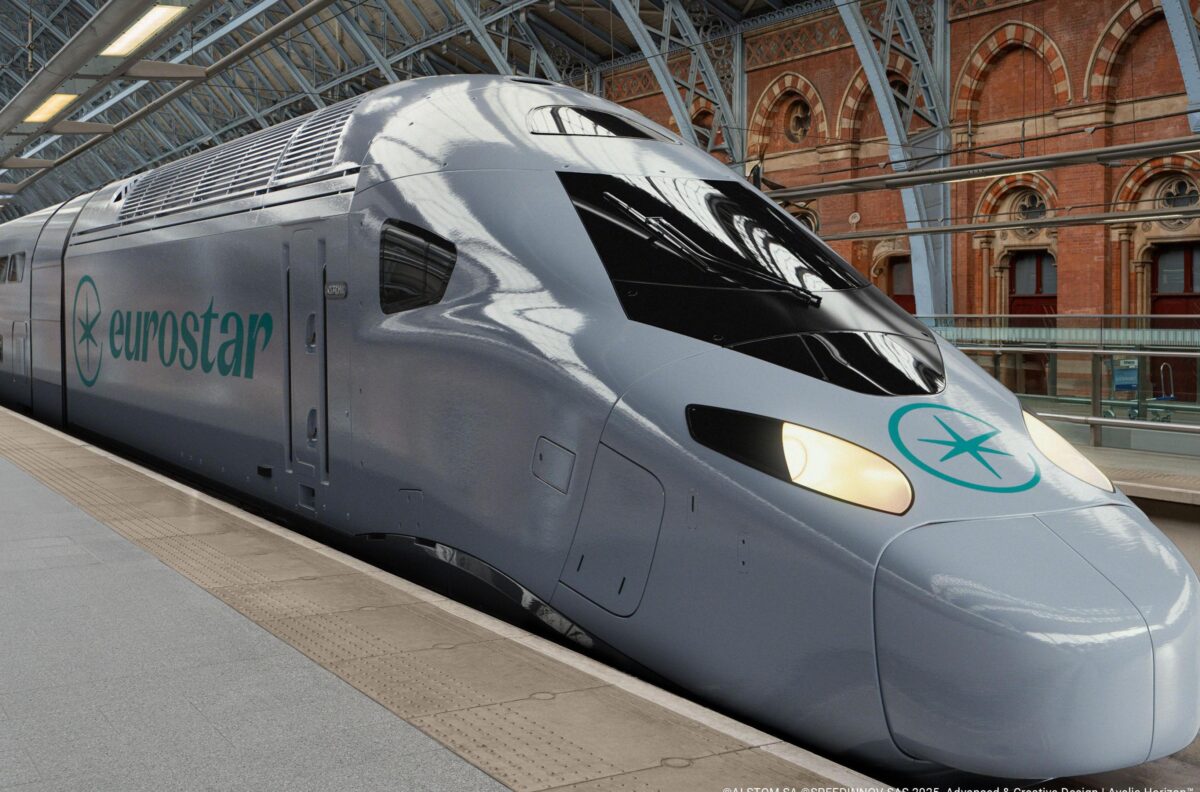Is Eurostar revolutionizing UK rail travel with double-decker Celestia trains?

Eurostar Celestia train at London St-Pancras International station. Image Source: Alstom
Eurostar is set to revolutionize cross-Channel rail travel with the launch of its first high-speed double-decker trains, Celestia, scheduled to operate from 2031. The €2bn deal with French manufacturer Alstom marks a major expansion of Eurostar’s fleet, designed to meet the rising demand for international rail services from the UK. Each new train will carry over 1,000 passengers, offering 20% more seating than existing models while enhancing comfort, accessibility, and amenities.
The announcement reflects Eurostar’s ambition to grow its passenger base to 30 million annually, up from 19.5 million last year. By introducing innovative double-decker designs, the rail operator aims to improve the Eurostar experience while modernizing the UK’s high-speed rail infrastructure.
Eurostar Orders Celestia Double-Decker Trains
Eurostar has officially ordered 30 Celestia trains, with an option for 20 more, representing the first high-speed double-decker trains on UK railways. The trains are 200 meters long, and if coupled, two trains can provide a 400-meter service accommodating around 1,080 passengers. Eurostar’s chief executive, Gwendoline Cazenave, emphasizes that these trains will offer “exceptional comfort” and a unique travel experience.
The expansion is designed to accommodate the growing international travel demand while providing additional space for wheelchairs, bicycles, legroom, and other enhancements. The new trains will gradually replace older models, leaving Eurostar with a fleet approximately 30% larger than today, enabling routes to Geneva and Frankfurt from London.
READ ALSO
Is London’s SL15 route about to transform commuting between Bromley and Croydon?
Temple Mills Depot: The Heart of Eurostar’s Expansion
Eurostar plans to maintain the new fleet at its Temple Mills depot in north-east London, investing €80m to upgrade the facility and create 350 new jobs. The depot will support the growing operations and is the only UK facility equipped to handle the larger continental trains. Eurostar’s investment underscores its commitment to long-term expansion and passenger service improvements.
However, space at Temple Mills is also in demand from competitors such as Virgin, FS Italiane, and Gemini Trains. The UK regulator, the Office of Rail and Road (ORR), is reviewing proposals to allow other operators to use the depot, with a decision expected by the end of October. Eurostar maintains that sharing the depot may not be feasible given its planned growth.
Impact on UK Rail Travel and Passenger Experience
The Celestia double-decker trains will provide significant benefits for passengers, including increased capacity, more legroom, and innovative layouts for accessibility. Eurostar’s initiative is seen as a milestone in modernizing cross-Channel services while maintaining comfort and reliability. The trains are expected to operate across the network, including long-term plans for Frankfurt and Geneva.
Industry experts note that introducing double-decker trains in the UK comes with challenges, as most routes were not designed for such large vehicles. Obstacles like tunnel clearances and overhead lines may limit the widespread adoption of double-deckers beyond Eurostar services. Despite this, the project marks a significant step in boosting sustainable international rail travel.
Looking Ahead: Eurostar’s Vision for Growth
Eurostar’s long-term strategy aims to expand international rail travel, provide sustainable alternatives to air travel, and modernize UK high-speed rail infrastructure. By increasing fleet size and introducing double-decker designs, Eurostar is positioning itself as a leader in European high-speed rail innovation.
Cazenave emphasized that private investment, public transport policy, and infrastructure expansion are all necessary to meet passenger demand. The Celestia trains symbolize Eurostar’s vision for a comfortable, high-capacity, and future-ready cross-Channel rail network.
FAQ
Q1: When will Eurostar launch double-decker trains?
A1: Eurostar’s first Celestia double-decker trains are scheduled to enter service in 2031, with six trains expected to run initially.
Q2: What are Celestia trains?
A2: Celestia trains are high-speed, double-decker Eurostar trains capable of carrying over 1,000 passengers, offering increased seating, accessibility, and comfort.
Q3: How many passengers can the new Eurostar trains carry?
A3: Each 200-meter Celestia train can carry more than 540 passengers, and two coupled trains can accommodate around 1,080 passengers.
Q4: Where will Eurostar maintain the new trains?
A4: The new trains will be maintained at the Temple Mills depot in north-east London, with a planned €80m redevelopment to expand capacity.
Q5: Will Eurostar add new routes with these trains?
A5: Yes, Eurostar plans to expand its network to include Frankfurt and Geneva from London, along with other existing cross-Channel routes.
Q6: Who manufactures the Celestia trains?
A6: French train manufacturer Alstom is producing the Celestia double-decker high-speed trains for Eurostar.
Q7: Can other operators use Eurostar’s Temple Mills depot?
A7: Competitors like Virgin, FS Italiane, and Gemini Trains have requested access, but Eurostar says sharing the depot may conflict with its expansion plans.
Q8: How will the new trains impact passenger comfort?
A8: Celestia trains will offer extra legroom, wheelchair accessibility, space for bicycles, and a modernized travel experience across all international routes.
Q9: Why are double-decker trains rare in the UK?
A9: UK railways were largely built for single-decker trains, and obstacles such as tunnels and overhead lines limit widespread double-decker adoption.
Q10: How does this expansion affect Eurostar’s fleet size?
A10: The new order will increase Eurostar’s fleet by nearly 30%, replacing older trains and enabling higher-capacity, more frequent services.

